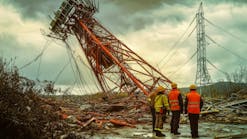Ecclesiastes tells us there is nothing new under the sun.
A church congregation in southern Arizona, however, has managed to utilize the sun’s blessings in a unique way for them.
Desert Garden United Church of Christ partnered with RE-volv to bring in 114 solar panels for a 47-kW on-site project. The distributed energy resource can help the church save about $14,000 annually on electric bills and avoid the carbon emissions equivalent of 300 cars on the road.
“Our decision to go solar represents our commitment to preserving and protecting God’s beautiful creation through being good stewards of our environment and community," said Pastor Bill Utke of Desert Garden UCC in a statement. "We’re honored to serve as an example for Arizona congregations and nonprofits, showcasing the benefits of solar energy and the ease of transitioning with zero-down financing options, like RE-volv’s, and federal solar tax incentives.”
The yearly energy bill savings will help the church contribute more to the community. Desert Garden UCC contributes about $25,00 annually toward community good, including initiatives supporting at-risk youth and helping homeless seniors find housing.
Maryland Church Welcomes 2.5-MW Solar: More in EnergyTech
The event inaugurating Desert Garden UCC’s solar array included Capital Energy, which installed the project, and RE-volv, which provided financing. Also attending were Solar United Neighbors, Arizona Alliance for Retired Americans and Arizona Interfaith Power & Light.
The verse about the sun in Ecclesiastes begins with "what has been done will be done again." Local renewable energy supporters hope so.
“With its year-round abundance of sun, Arizona could be the solar capital of the country,” said Arizona State Sen. Lauren Kuby. “This investment at Desert Garden United Church of Christ represents proactive movement toward a clean energy future. And they are not alone. Places of worship across the State are modeling how solar is good for our communities and our wallets.”
Sun City West is an unincorporated community in Maricopa County close to Phoenix. As of 2023 Arizona ranked fifth nationally among states in installed solar energy capacity.
Louisiana Church installs Microgrid in Wake of Hurricane





